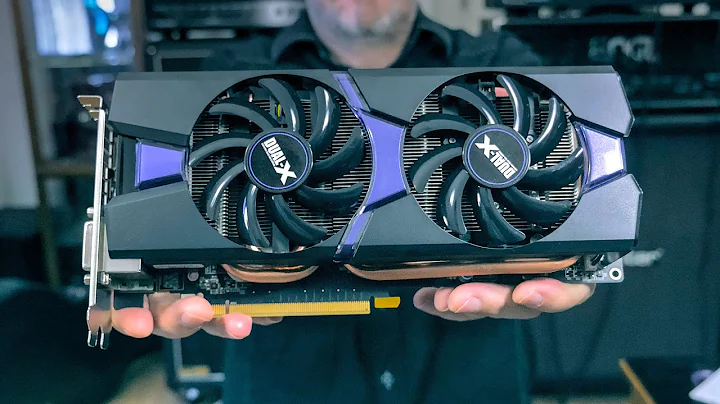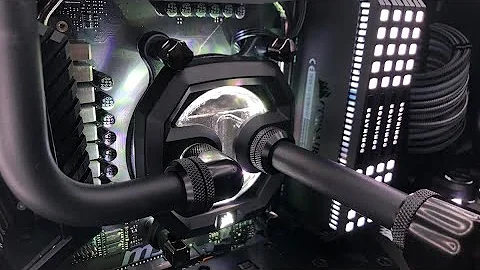The Truth About Upgrading to the New Ryzen Processors
Table of Contents
- Introduction
- Upgrading to the New Ryzen Processors
- Real-World Performance Comparison
- The Limitations of Adobe Products
- Benchmark Tests and Results
- Addressing the Disappointment
- Contacting Adobe for Solutions
- The Importance of Workarounds
- Community Engagement and Experiences
- Conclusion
Upgrading to the New Ryzen Processors: Is it Worth it?
Are you considering upgrading to the new Ryzen processors? Before you make your decision, let's take a closer look at the real-world performance and capabilities of these processors. In this article, we will discuss the limitations of Adobe products, benchmark test results, and possible workarounds for the disappointing experiences that some users have encountered. So, if you're looking for an honest assessment of the new Ryzen processors, keep reading to find out if they're worth the upgrade.
Introduction
In recent times, the new Ryzen processors have generated a lot of buzz among tech enthusiasts. With promises of superior performance and advanced Zen3 technology, many have eagerly anticipated the release of these processors. However, there have been reports of discrepancies between the advertised capabilities and the actual performance of these processors. In this article, we aim to shed light on these issues and provide a comprehensive analysis of the new Ryzen processors in real-world scenarios.
Upgrading to the New Ryzen Processors
Upgrading to a new processor is a significant decision, especially considering the associated costs of purchasing compatible motherboards, power supplies, and coolers. The allure of improved performance in daily workflows and demanding tasks is undoubtedly tempting. However, it is essential to manage expectations and understand the limitations of the technology before making a purchase.
Real-World Performance Comparison
One of the most significant factors in assessing the performance of a processor is how it handles real-world tasks. Some users have reported underwhelming results when using Adobe products such as Premiere Pro. Despite the higher core count and increased processing power, these applications are not fully utilizing the new Ryzen processors. As a result, the expected performance boost falls short of expectations.
The Limitations of Adobe Products
Upon further investigation, it became evident that Adobe products are not yet optimized to take full advantage of the new Ryzen processors. Premiere Pro, for example, only utilizes a fraction of the CPU's potential, resulting in significant rendering times that are comparable to older, less powerful processors. This limitation is a significant drawback for those who rely heavily on Adobe software for their work.
Benchmark Tests and Results
To ascertain the true capabilities of the new Ryzen processors, benchmark tests were conducted. These tests aimed to evaluate the overall performance and efficiency of the processors compared to their predecessors. The results showed that, on paper, the new Ryzen processors indeed outperform their older counterparts. However, their performance in real-world scenarios, especially when utilizing Adobe products, does not meet expectations.
Addressing the Disappointment
The gap between the advertised capabilities of the new Ryzen processors and their real-world performance has understandably caused disappointment among users. Many enthusiasts feel misled by the marketing hype surrounding these processors. The discrepancy between the promises made on paper and the actual performance experienced creates a sense of frustration and dissatisfaction.
Contacting Adobe for Solutions
In an effort to address these concerns, users have reached out to Adobe for clarification and possible solutions. Adobe has acknowledged that their products are not fully optimized for the new Ryzen processors, thereby confirming the limitations reported by users. Discussions are underway to improve compatibility and performance, but this process takes time.
The Importance of Workarounds
While waiting for official solutions from Adobe, some users have discovered workarounds to improve performance. By tweaking settings and utilizing software-based rendering instead of hardware encoding, certain improvements in processing times have been observed. These workarounds offer a Glimmer of hope for those looking to maximize the potential of their new Ryzen processors.
Community Engagement and Experiences
The tech community plays a crucial role in identifying and addressing performance issues with new hardware. By sharing their experiences and engaging in discussions, users can help each other navigate the challenges posed by the new Ryzen processors. So, if you have encountered similar issues or found effective workarounds, we encourage you to share your thoughts and experiences in the comments section.
Conclusion
In conclusion, the reality of upgrading to the new Ryzen processors may not live up to the initial hype. While the processors show promising results in benchmark tests, the limitations imposed by software optimization, particularly in Adobe products, hinder their true potential. However, by exploring workarounds and remaining engaged with the tech community, users can still make the most of their new Ryzen processors. As technology continues to evolve, it is essential to manage expectations and keep an open mind when considering hardware upgrades.
Highlights
- The real-world performance of the new Ryzen processors falls short of expectations.
- Adobe products, such as Premiere Pro, do not fully utilize the potential of the new Ryzen processors.
- Benchmark tests demonstrate that the new Ryzen processors outperform their predecessors on paper.
- Users have reported disappointment and frustration with the performance of the new Ryzen processors.
- Workarounds and community engagement offer potential solutions and support for users.
FAQ
Q: Are the new Ryzen processors worth the upgrade?
A: The answer depends on your specific needs and expectations. While the new Ryzen processors show promise on paper, their real-world performance, especially with Adobe products, may not align with the advertised capabilities. It's important to manage your expectations and consider the limitations before making a decision.
Q: Can Adobe optimize their products for the new Ryzen processors?
A: Yes, Adobe has acknowledged the limitations and is working towards optimizing their products for the new Ryzen processors. However, this process takes time, and users may need to explore alternative workarounds in the meantime.
Q: Are there any workarounds to improve the performance of the new Ryzen processors?
A: Some users have discovered workarounds by adjusting settings and utilizing software-based rendering instead of hardware encoding. These workarounds have shown improvements in processing times, providing temporary solutions until official optimizations are implemented.
Q: What role does the tech community play in addressing these performance issues?
A: The tech community plays an essential role in identifying and discussing performance issues with new hardware. By sharing experiences, engaging in discussions, and discovering workarounds, users can support each other and contribute to the ongoing improvement of hardware performance.
Q: Should I hold off on upgrading to the new Ryzen processors?
A: It is advisable to consider the current limitations and manage your expectations before upgrading to the new Ryzen processors. While improvements are being made, it is essential to weigh the potential benefits against the current performance issues.


 5.3K
5.3K
 18.88%
18.88%
 2
2


 90.8K
90.8K
 50.53%
50.53%
 4
4


 < 5K
< 5K
 1
1


 1M
1M
 44.54%
44.54%
 1
1


 < 5K
< 5K
 4
4
 WHY YOU SHOULD CHOOSE TOOLIFY
WHY YOU SHOULD CHOOSE TOOLIFY



































